Orange plants are a great addition to any home. Whether they’re grown inside or outside, they can easily turn a dull space into something exciting, joyful, and exotic thanks to their vibrancy and brightness.

But with so many flowers out there, it can be hard to know which ones to focus on. So we’ve done the hard work for you.
We’ve taken a look at some of the most well-loved orange flowers you can come across and created the list below, just for you. Read on to discover all the beautiful orange blooms that can bring a burst of color to your life.
1. Lantana
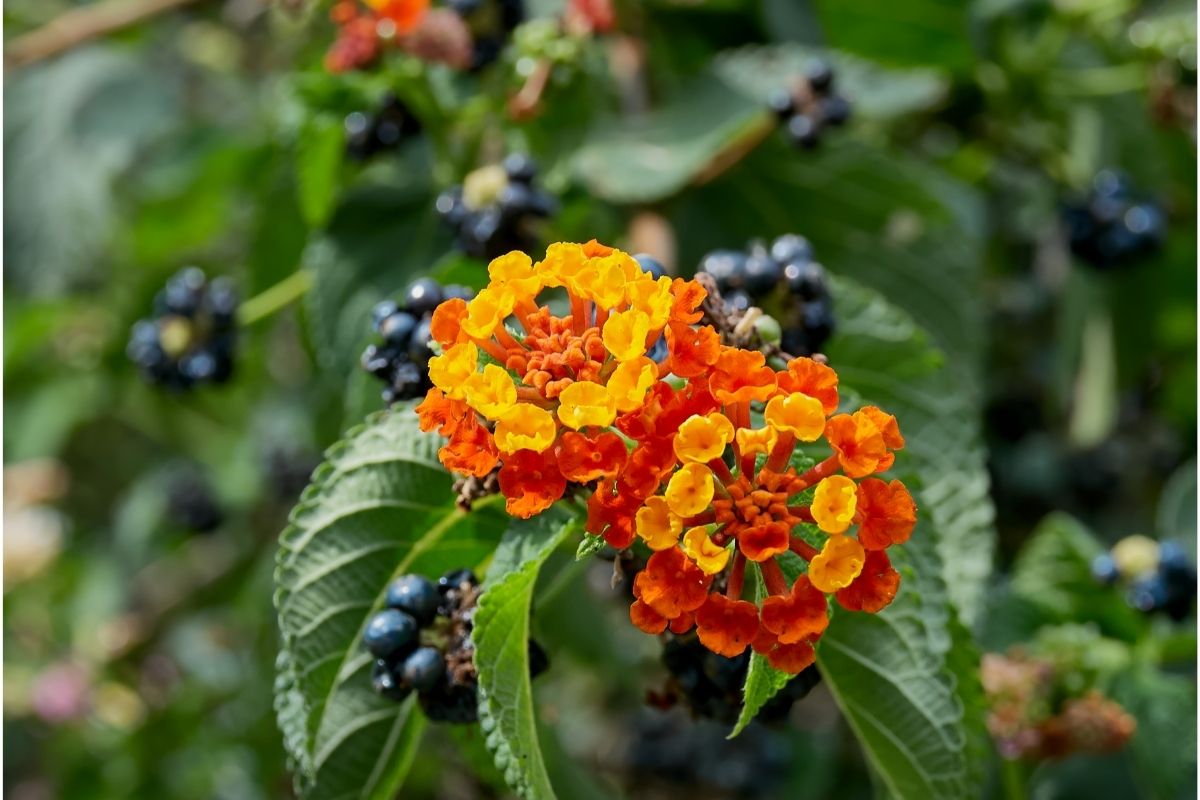
These tropical plants tend to bloom from midsummer through to the winter months and bring with them an incredibly refreshing fragrance.
They need full exposure to the sun and bloom fully in well-drained soil so keep this in mind when choosing an area to plant them in.
The flowers on this plant are tiny and form clusters of bright blooms. Although they are available in other colors, such as red, yellow, white, and purple, the orange variety stands out when planted alongside other flowers.
If you’re hoping to attract butterflies into your garden, this plant is the perfect way to do it as the bright blooms and dark green, wrinkly leaves are a great invitation for all types of insects.
2. Orange Lily

This species of Lily blooms in the early summer months and brings with it an element of drama to your garden.
It’s a vibrant plant with showy orange flowers, each with distinctive red accents and brown spots which vary in size. From mature bulbs, you can expect around six flowers to grow.
This plant is relatively easy to grow as it likes partial shade and well-drained soil, and once the plants are done flowering, simply cut the foliage back when it turns yellow.
3. Pocketbook Plant

Even though this flower hails from the tropics, it requires partial to full shade to bloom fully. In northern climates.
The Pocketbook Plant can be kept in greenhouses with a temperature of around 65 degrees Fahrenheit. Anything below this and the plant will struggle to bloom.
It’s available in a variety of colors, including its vibrant orange shade, and the bloom can grow up to 2 inches across with a large flower petal taking center stage.
4. Pansy
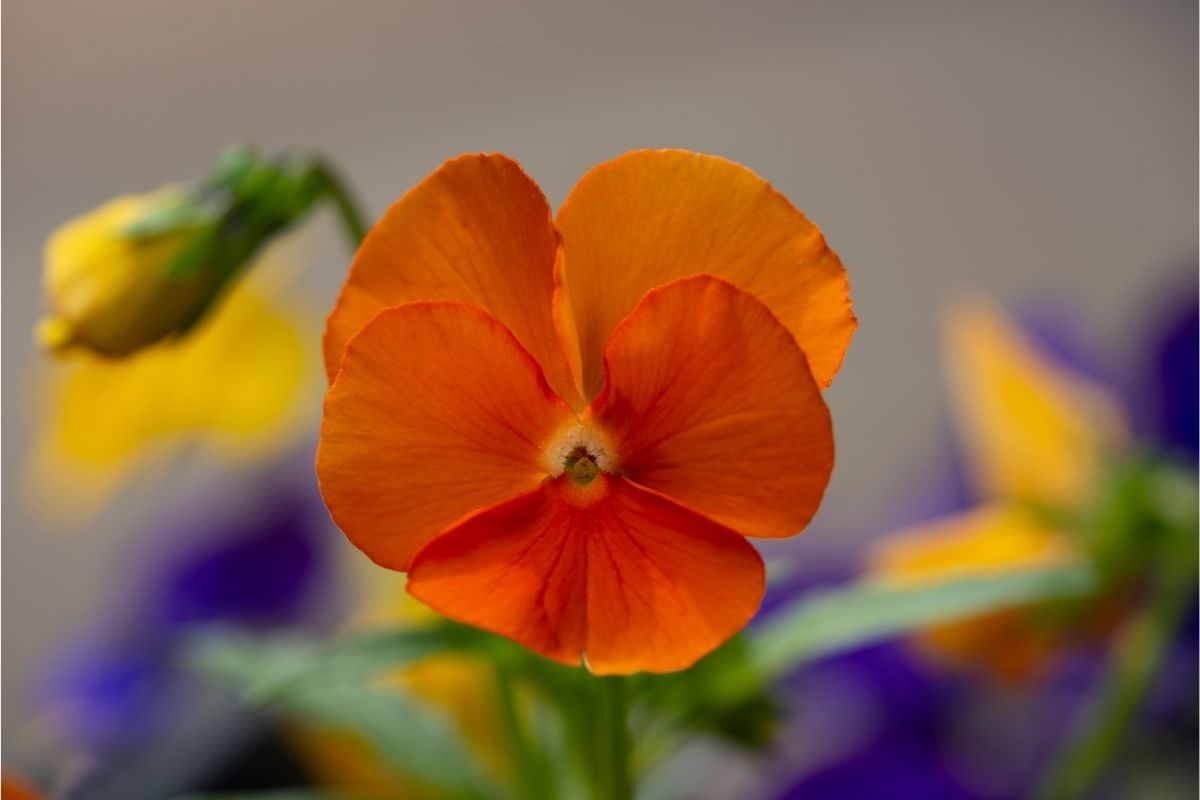
These popular garden flowers have a relatively flat appearance and grow to around 2 to 4 inches across, making them perfect for smaller spaces.
Available in a wide range of colors, including red, pink, yellow, blue, purple, and of course orange, this plant brings a vibrance to any space.
This plant tends to bloom from mid-spring through to early summer and enjoys plenty of sunshine and well-drained soil.
5. Flowering Maple
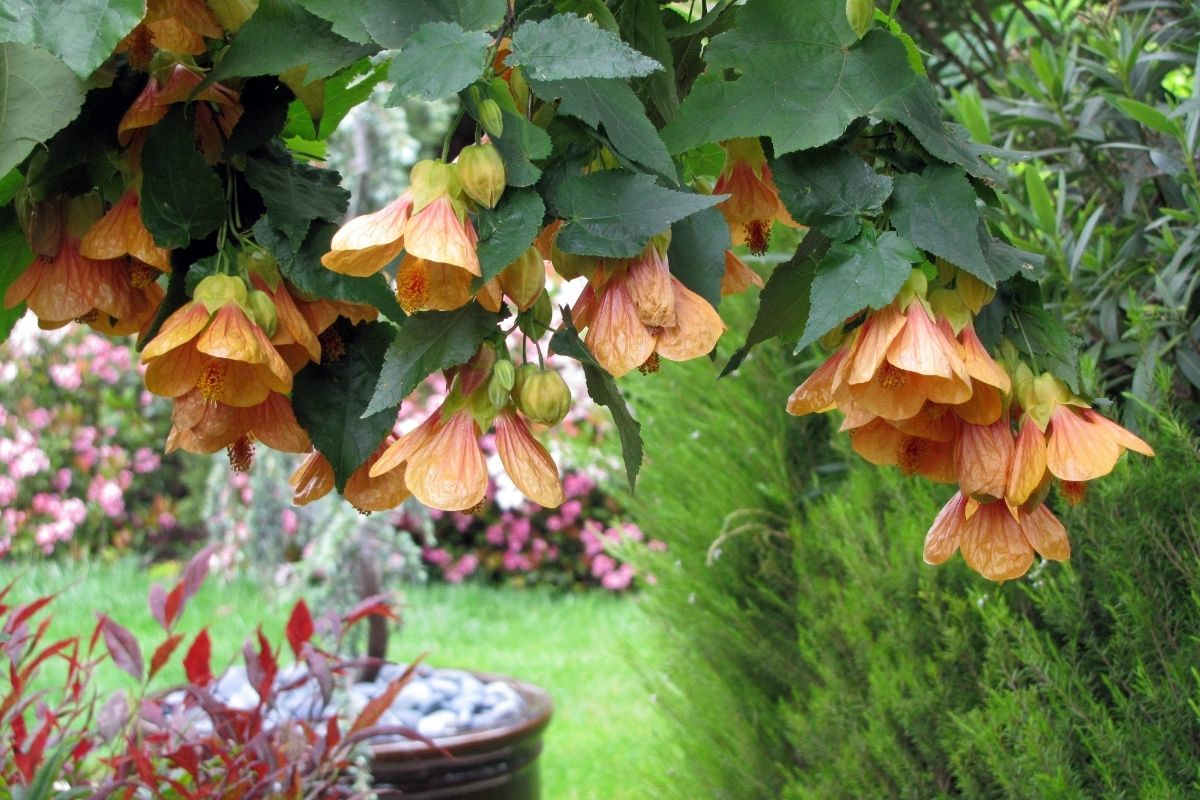
The Flowering Maple is a subtropical plant that is extremely sensitive to frost and cold temperatures. The good news is that these plants can be moved inside over the winter months to keep them alive.
Available in several colors, including yellow, red, pink, white, and orange, these plants add a beautiful pop of color to any garden.
Pretty in appearance, these plants resemble small maple trees, hence the name, with bell-shaped flowers.
6. Tulip

Tulips are considered one of the most popular flowers for gardeners, and other than true blue, they are available in most colors, including a vibrant orange.
The best time to plant Tulip bulbs is during the fall, after which they will make an appearance in the spring. Their beautiful cup-shaped flowers need full sun, so plant them in an area away from shade.
Once the foliage of these flowers turns yellow, you can remove it from the plant, ready for it to bloom again.
RELATED: The Bloom Of Youth: The Timeline Of A Blooming Tulip
7. Butterfly Weed

Native to the eastern and southern United States, the Butterfly Weed grows in small clumps that can reach around 1 to 3 feet in height.
During the summer months, this plant has clusters of tiny, vibrant orange flowers which eventually give way to seed pods.
If you want to limit the plant’s spread, make sure you remove these pods as soon as you see them. The Butterfly Weed loves the sunshine, so when planting it, choose an area that guarantees full sun all day long.
If you are trying to attract butterflies into your space, the vibrancy of this plant is perfect for doing so.
8. Chinese Lantern
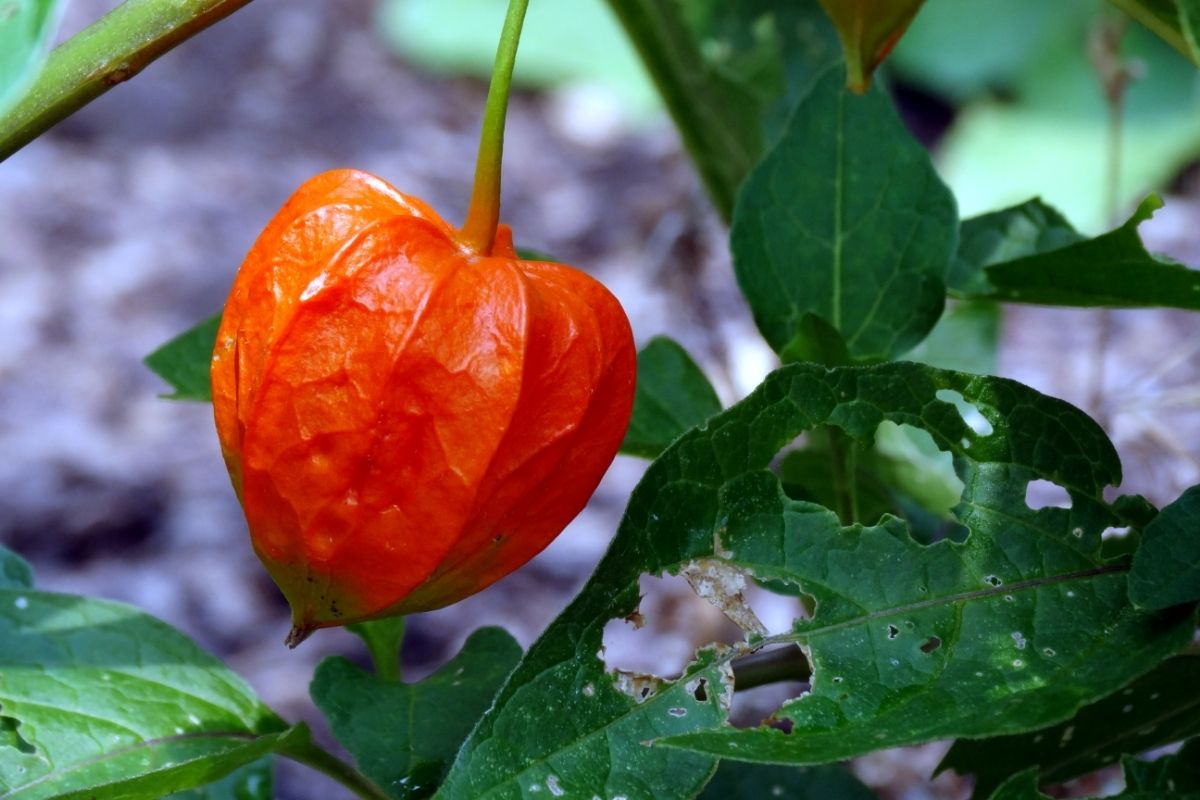
The Chinese Lantern plant blooms throughout the summer months and grows in clumps which can reach around 1 to 2 feet in height. Small white flowers give way to this plant’s main feature – the orange calyx, or seed pod as it’s otherwise known.
The calyces look similar in appearance to lanterns, hence the name, and hang from the plant creating a beautiful shape that stands out amongst other flowers and plants.
For a full bloom, this plant will need full sunshine, so be sure to place it in an area that can deliver uninterrupted sunlight and also well-drained soil.
9. Oriental Poppy

These plants add glorious color to the landscape and have a unique texture to them, similar to that of crepe paper. Blooming during the summertime, these plants tend to grow in small clumps surrounded by gray-green foliage.
As soon as the plant has finished flowering, the foliage dies, however, providing a layer of mulch to your soil can help this plant survive throughout the winter months.
10. Calendula

Calendula, or Marigolds as this plant is more commonly known, are incredibly easy to grow and are often found in gardens across the globe.
You can initially grow these plants indoors from seed and transfer them to your outdoor space around 7 weeks after the last of the winter weather.
Available in both yellow and orange colors, these Chrysanthemum-like blooms may only be a couple of inches in size but are full of character.
Typically they grow best in well-drained soil and need exposure to both sunlight and shade.
11. Montbretia

The Montbretia is often used within floral arrangements thanks to its unique shape and height.
Native to the grasslands of southern and eastern Africa, the foliage of this plant is similar to that of an Iris while its dainty, bright orange flowers are close in appearance to Freesias.
Reaching around 2-4 feet tall, this plant needs a layer of mulch over the soil throughout the winter months to help it survive the lower temperatures.
12. Canna Lily
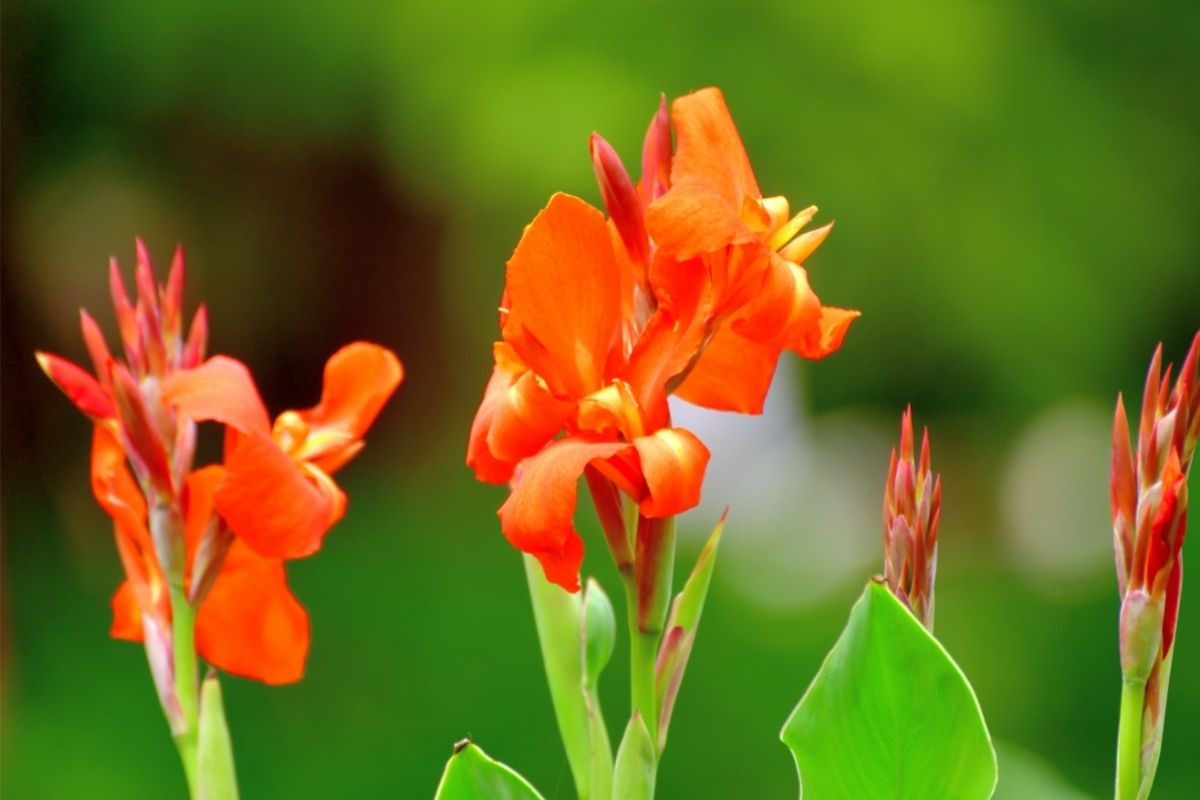
You may be mistaken for thinking that this plant is from the Lily family, but it’s not a true Lily at all. It does, however, have blooms that are incredibly similar to Lilies which are a glorious orange color and make these plants the perfect choice for a summer bedding plant.
Throughout the winter months, you can remove the bulbs of this plant from the soil and store them until the spring.
To reach its full height of 5 feet, this plant will need to be placed in an area with full exposure to the sun and in soil that is well-drained.
13. Zinnia

Even though the Zinnia plant is available in a range of colors, except for blue and brown, the orange variety of this plant remains a firm favorite with gardeners the world over.
Known for its bright blooms, this plant creates an explosion of color in your space which lasts from late spring until the first frost in winter.
To guarantee a continuous supply of blooms throughout spring and summer, plant the seeds in spring and gradually add more every few weeks.
14. Trumpet Vine

This climbing vine is a perfect plant for turning an arbor, trellis, or fence into a focal point in your garden. The trumpet-shaped flowers of this plant bloom in the summertime and glow a vibrant orange to red color.
These flowers are ideal for enticing hummingbirds into your space as they are known for enjoying these particular flowers.
To contain this plant’s growth, you will need to prune back the vine as and when it’s needed.
15. Nasturtium
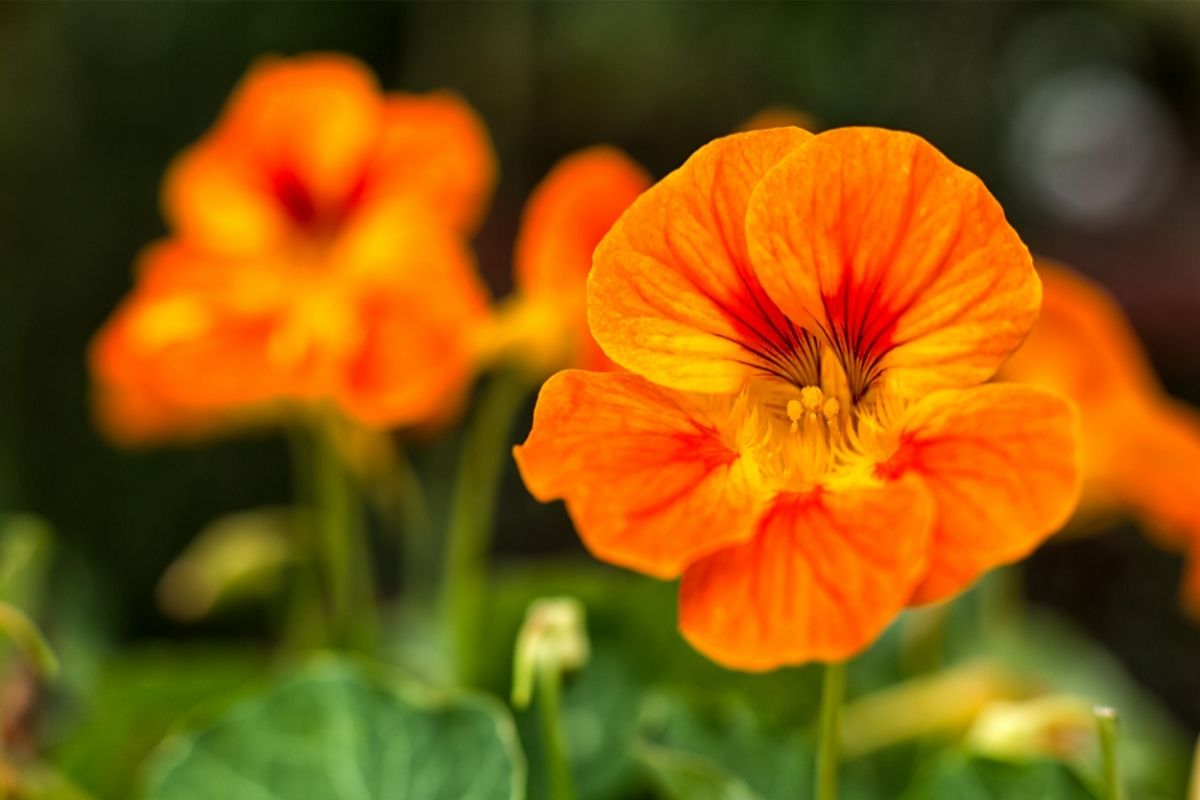
This plant blooms throughout the summer and early fall, making it perfect for extending the vibrancy of your garden into those dark winter days.
The Nasturtium plant is better suited to colder climates and tends to struggle during the hot weather, so planting it in a shady spot is be ideal. This easy-to-care-for plant is available in orange, red, cream, and yellow and is perfect for first-time gardeners.
16. Mexican Sunflower

This annual plant can reach an incredible height of around 4 to 6 feet tall and can spread to around 2 to 3 feet wide, so if you have a large space to fill, this plant is a great choice.
The deep orange-red bloom color paired against its yellow center attracts butterflies and insects into your garden as well as creates a glorious visual feast. This plant loves the sunshine, so place this in an area away from any shade.
If you plant Mexican Sunflower seeds in the springtime, these daisy-like flowers will bloom throughout the summer months and into early fall.
RELATED: A Place In The Sun: 15 Different Types Of Sunflower
Final Thoughts
With so many interesting and unique flowers available in glorious shades of orange, you are spoilt for choice when it comes to including this incredible color in your garden.
From Tulips to Trumpet Vines, these flowers will add a sense of warmth and joy to any space, especially when paired with other brightly colored blooms.
Editor’s Recommendations
Root Maggots: How to Get Rid of Root Eating Insect Pest Naturally?
Identification and Control of Darkling Beetles by Natural and Chemical Ways
An All-In-One Guide to Small Brown Bugs | Fun Facts, Pictures and Identification Guide







